The Mills campus has it all: Beauty, history, modern spaces—even ghosts
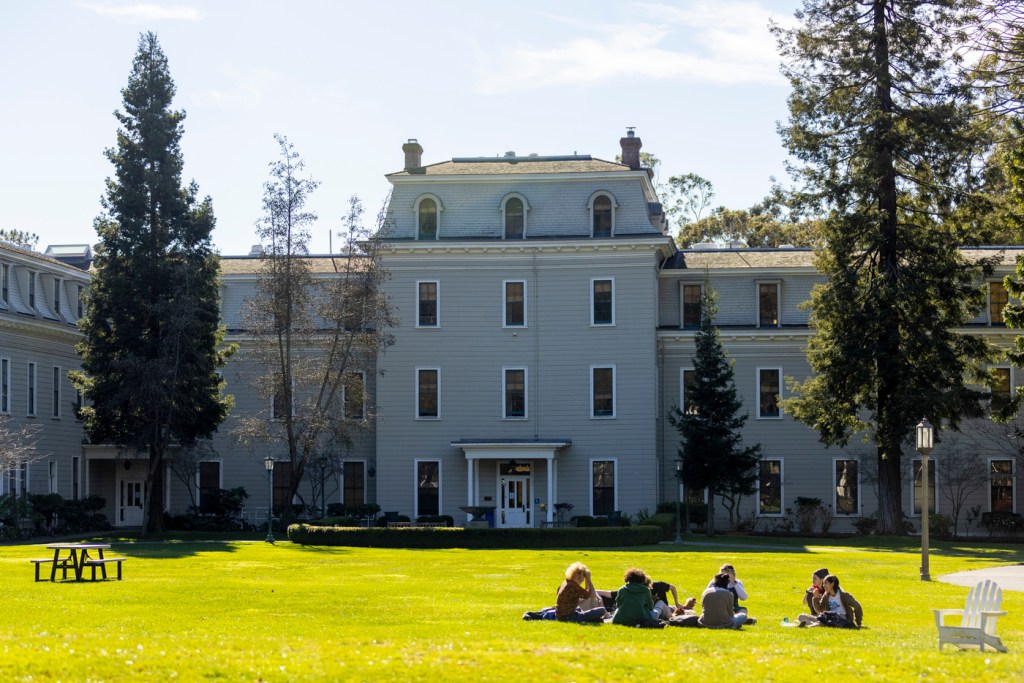
OAKLAND, Calif.—You could live in the area all your life and not know it was there.
Sectioned off from the hustle and bustle of surrounding Oakland and San Francisco, a beautiful, 135-acre property makes up what is now known as Mills College at Northeastern University.
Eucalyptus trees dominate the landscape, the majestic Mills Hall offers architectural heritage and ghost stories provide intrigue on the 170-year-old campus.
“It’s such a little kind of nirvana away from everywhere else,” said Helen Walter, visiting associate professor of biology at Mills. “It’s just this little place where nobody really knows until you come here.”
“It’s pretty bucolic,” said Mills alumna Leah Zippert.
When alumni reflect on their time at Mills, regardless of when they attended, they remark on how much they loved living on the campus. “I think having an aesthetically pleasing campus is good for students,” Zippert said.
There’s so much that Mills brings to the table as it officially merges with Northeastern University and a new crop of students prepares to make its way to Oakland. That includes the campus, which is filled with interesting and quirky spots that make the place special.
Here are a few of the top spots to explore on campus:
Mills Hall and the Main Quad
If you’re looking for Mills history, look no further than Mills Hall.
Constructed in 1871, the beige, four-story building with a mansard roof was the first to be built on campus, and was the site of all classes, dormitories and dining halls in the college’s early days. The building—which, at one time, was partially covered in roses—has been listed in the National Register of Historic Places since 1971.
Mills Hall also abuts two other historic campus sites. In front of the hall is a roundabout known as The Oval, which was once a 200-meter track. On the other side of the hall, the idyllic Holmgren Meadow serves as the main quad, and was once the location of Mills’ commencement ceremonies. At one time, it was also the site of the school’s swimming pool.
Ghosts of Mills College
When Zippert was at Mills, she had a rule: never study in Ethel Moore Residence Hall’s library by herself.
Like many Mills students, she’d heard a rumor that the campus was haunted. Legend has it that a phantom visited a sleepy student in the dorm library, a mystery that remains unsolved.
“The rumor is that someone fell asleep doing math homework and they woke up and the math homework was done,” she said. “I can say it never happened to me.”
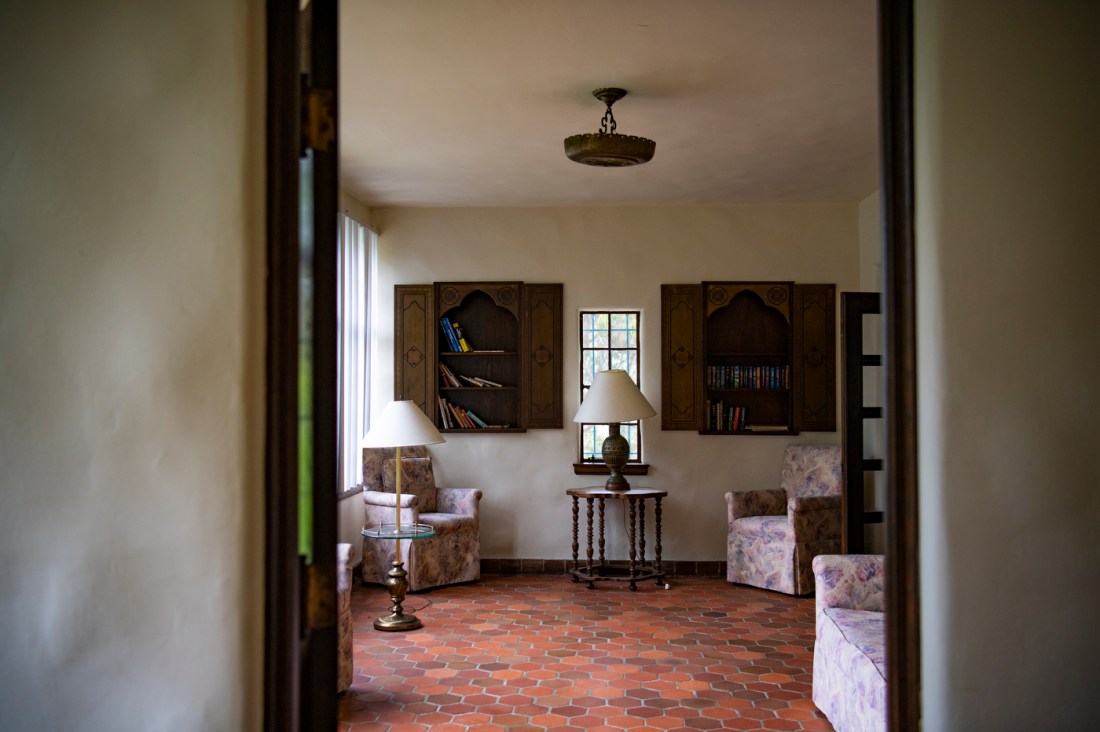

It’s not surprising that rumors like these would pop up considering the college has its own cemetery. In a remote corner of campus, college founders Susan and Cyrus Mills are buried in a small gravesite called Sunnyside Cemetery (another rumor has it that the graves protected Mills from being bisected when a highway was built in the 1960s).
Before being laid to rest in the cemetery, Susan Mills laid in state in Lisser Hall after her death in 1912. To this day, students claim to have seen her there.
Other rumors of paranormal activity on campus abound: one janitor claimed he saw a horse and carriage during a night shift.
According to the Ghosts of Mills College Facebook page, in 1996, two students claimed to have seen a man sitting and reading a newspaper, then getting up and walking through a wall.
Eucalyptus Trees
“I still remember the first week I was there, and the smell of the eucalyptus trees was just wonderful,” said Mills alumna Natalie Mallinckrodt.
If there was ever a floral feature of the Mills campus, it’s the eucalyptus trees, many of which were planted in the early days of the college in the 1870s. The species originated in Australia, and, while beautiful, it’s actually considered to be invasive to the area.
The trees have seen some maintenance over the years—more than 100 of the 120-year-old, 120-foot-tall trees were felled in 2007. But the trees still dominate the landscape, and they serve as a symbol for the college: a eucalyptus leaf is the official symbol of the Alumnae Association of Mills College.
El Campanil
One of the most recognizable campus landmarks, the El Campanil clock tower has stood the test of time—and a few tectonic shifts. When a 1906 earthquake leveled 500 blocks in nearby San Francisco, the 72-foot-tall clock tower remained steady.
The clock tower’s survival made its architect Julia Morgan famous. Two years before the earthquake, Morgan was tasked with creating a home for 10 bells that had been gifted to the campus. She built the tower using reinforced concrete, a revolutionary idea at the time, and built five other buildings on campus, four of which still stand. After the earthquake, her career took off, and she became a pioneer for women in her field.
The bells chime out the hour to this day, thanks to a pendulum and an intricate set of gears and pulleys at the top of the tower. Each of the bells has a name: Faith, Hope, Joy, Love, Peace, Meekness, Gentleness, Goodness, Self-control and Long-suffering.
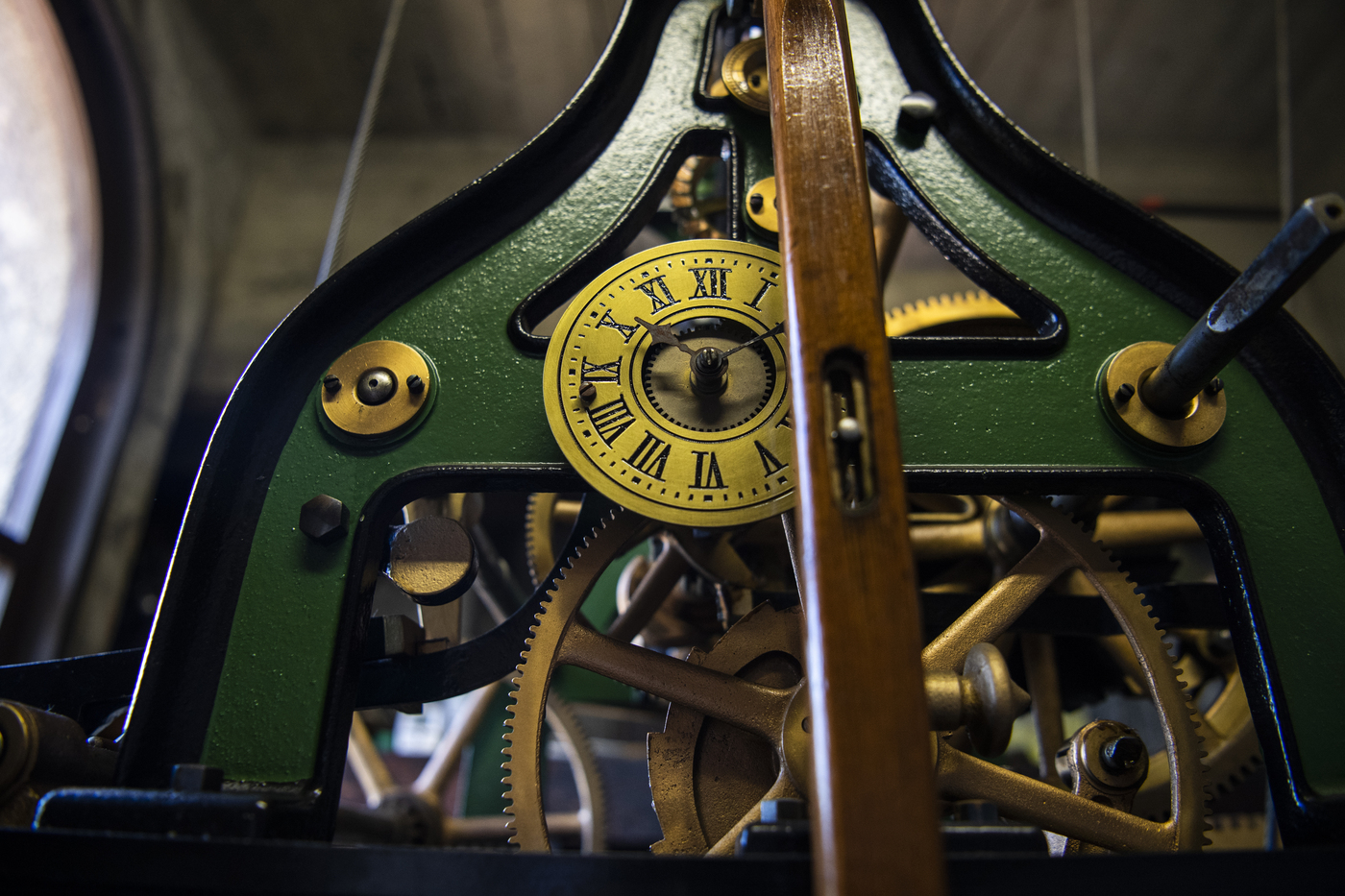
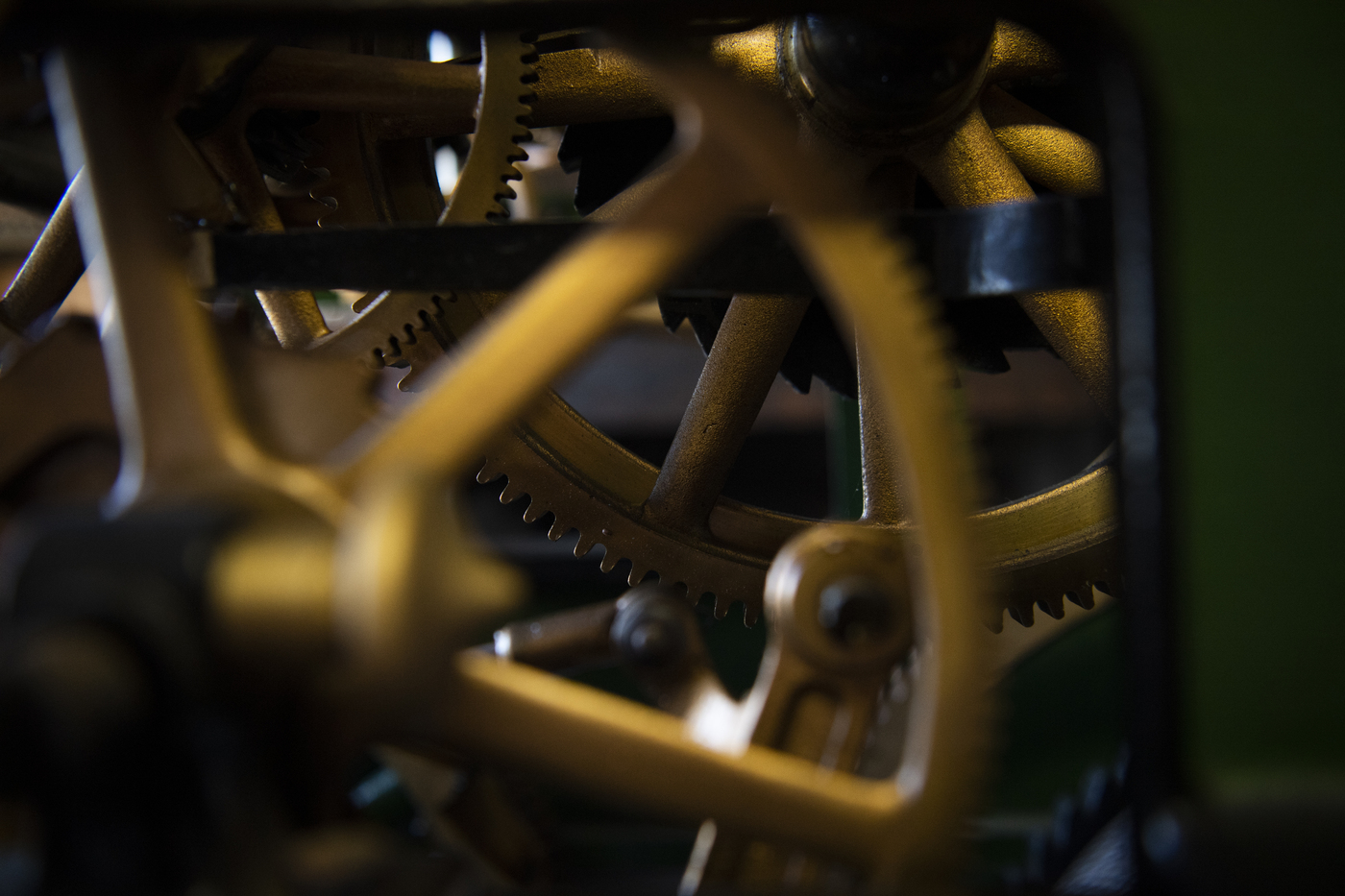
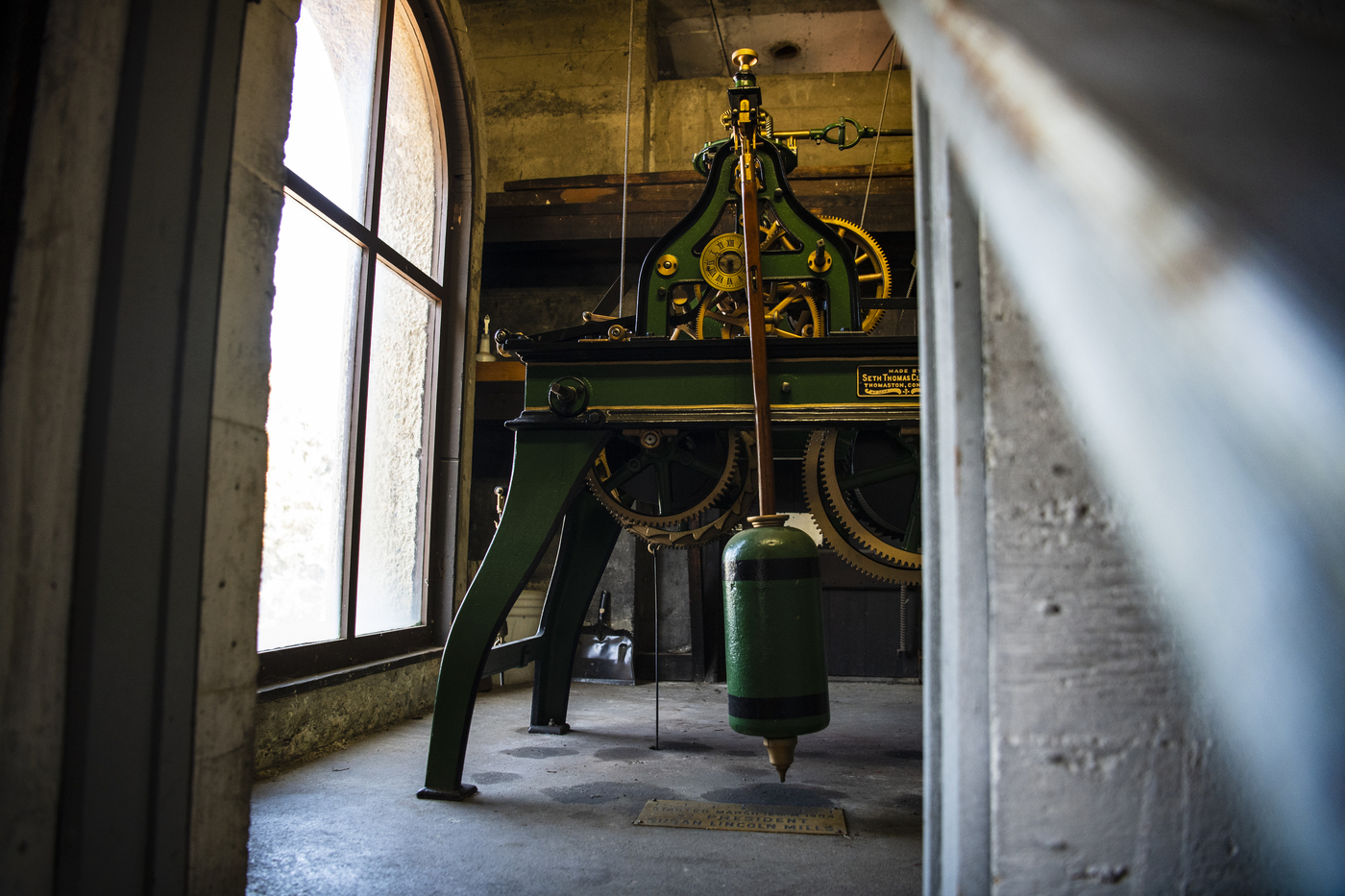
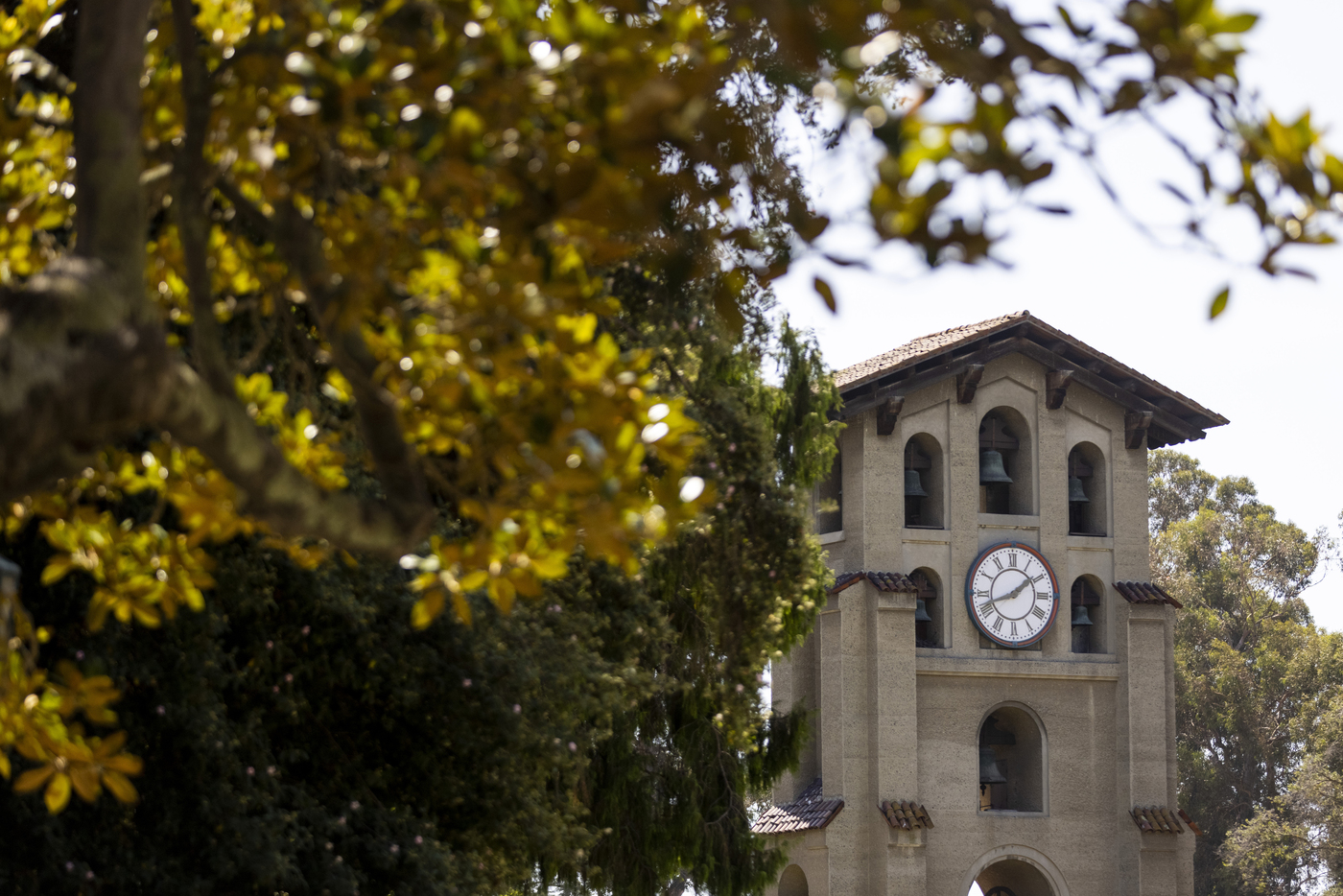
Littlefield Concert Hall and the Greek Theater
When it comes to breathtaking interiors, you can’t beat Littlefield Concert Hall. The hall, which dates back to 1928 and seats 450, features colorful murals depicting the California Mother Lode painted by artist Raymond Boynton, along with geometric patterns lining the ceiling.
Directly behind Littlefield lies the Greek Theater, a 500-seat, semicircular, open-air performance venue.
Mills alumna Melissa Stevenson Diaz remembers this space fondly. “I have a wonderful memory there of hearing [jazz musician] Dave Brubeck perform when I was a student,” she said. “It was the first time I’d actually seen live jazz. And I was just blown away by professional musicians being excited to play.”
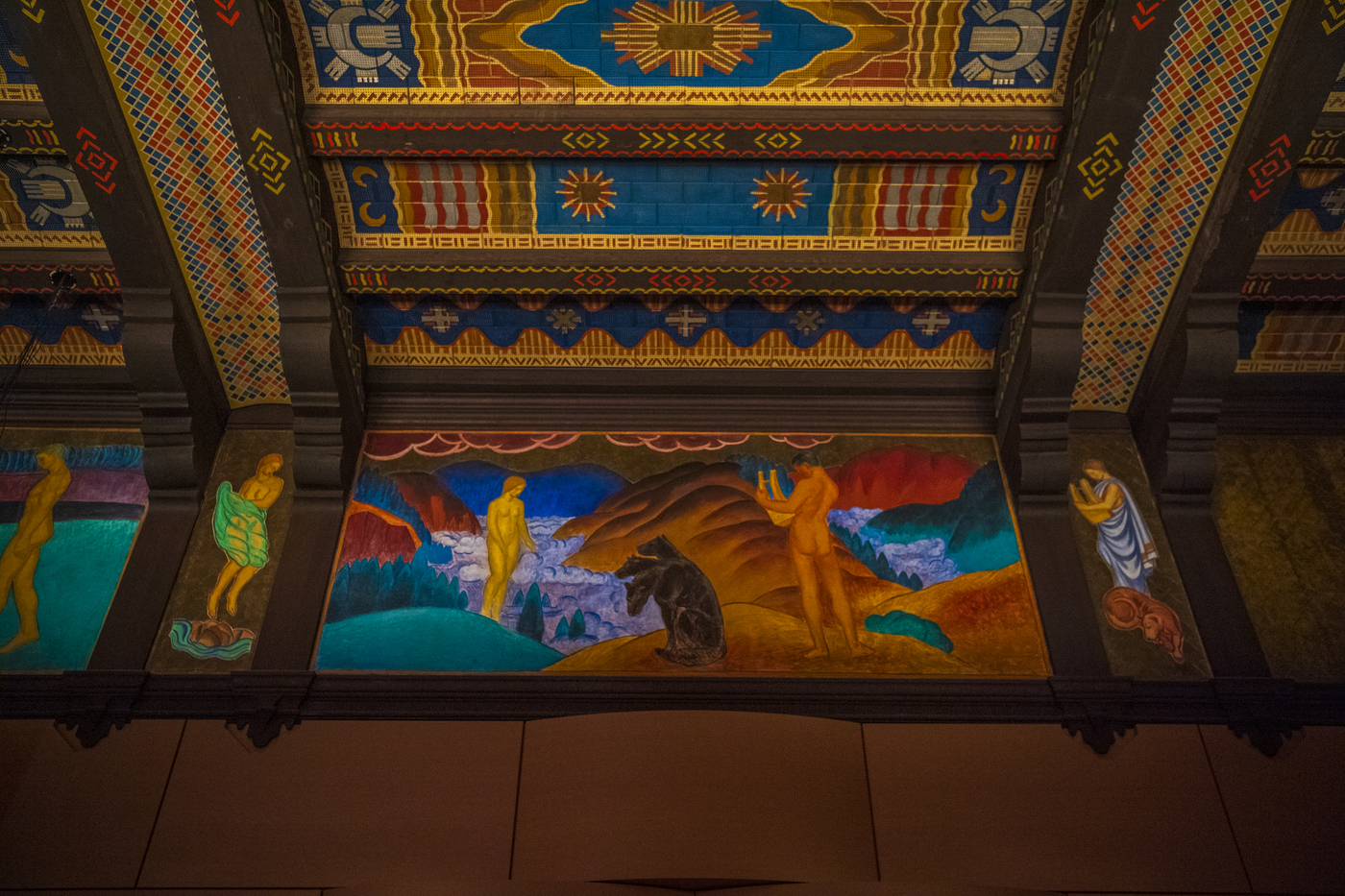
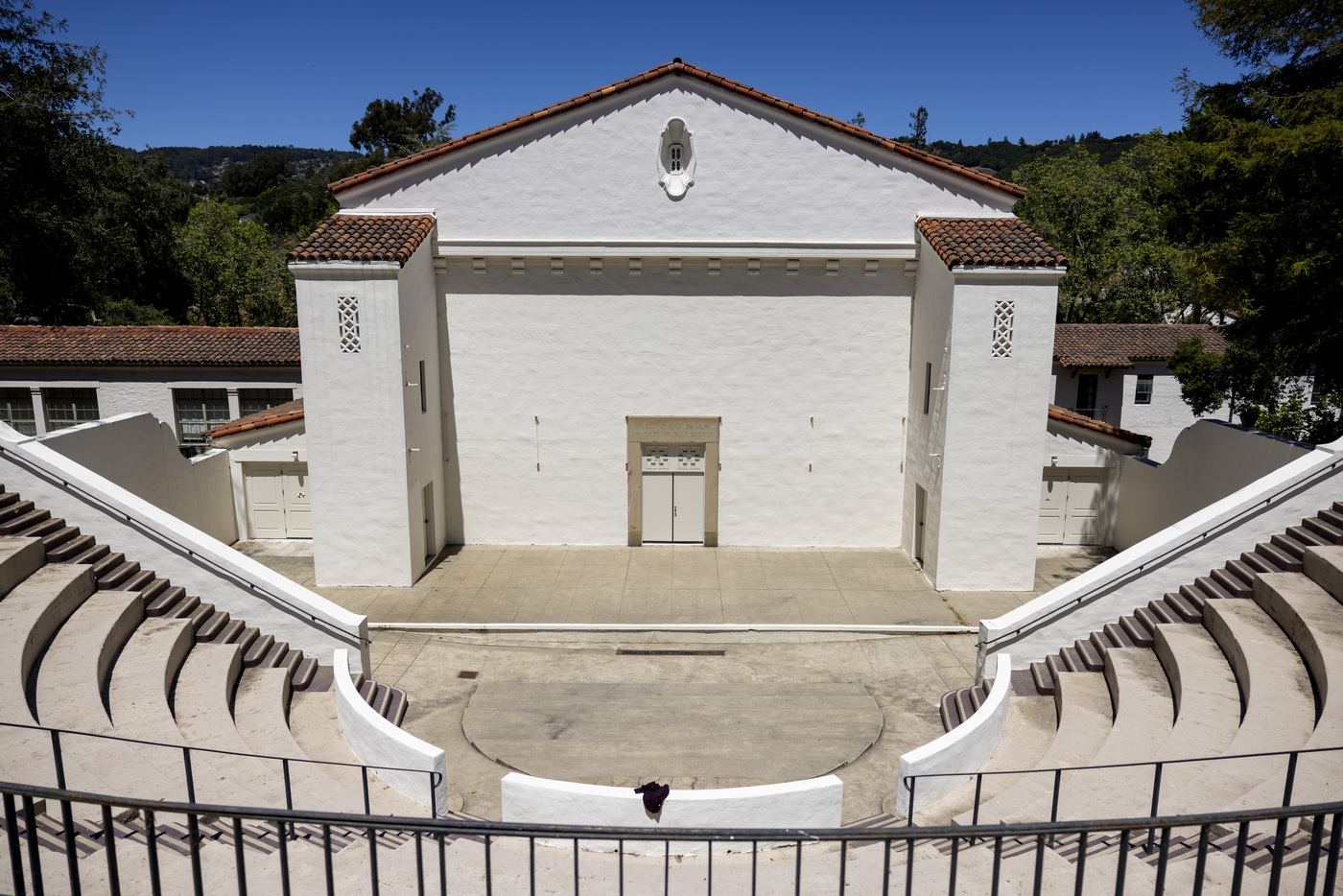
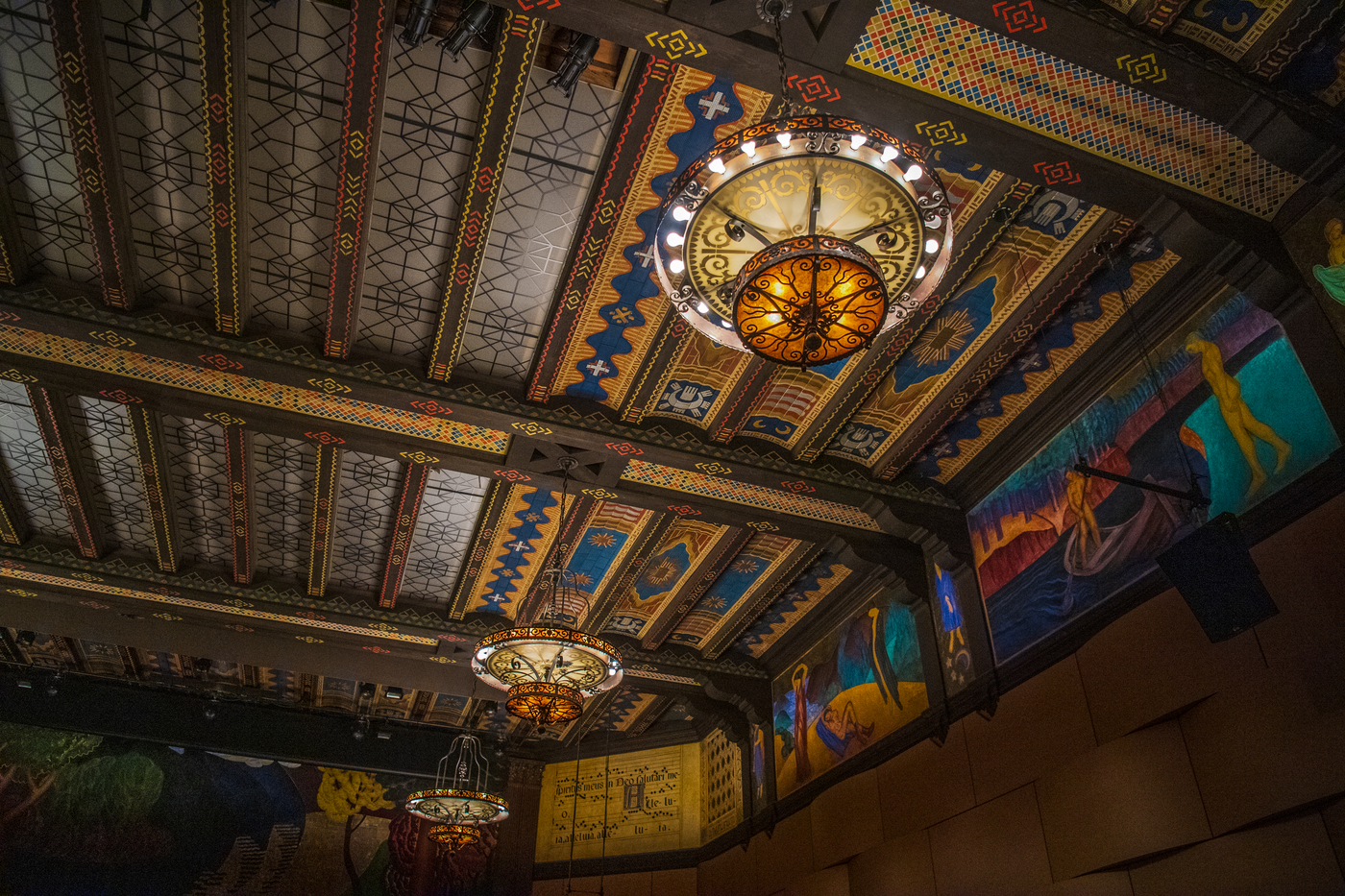

The Collections
Founded in 1925, the Mills College Art Museum boasts a collection of over 12,000 works of art. It’s comprised of paintings, works on paper, ceramics, and other works from world-renowned artists, and includes an etching by Edgar Degas. Two marble dogs guard the entrance to the gallery; these are Ming-era sculptures that were donated to the college in 1933.
For more historical artifacts, check out the Mills College Special Collections and Archives, which features a leaf from a Gutenberg bible.
Campus Quirks
Other little corners of the campus have plenty to offer, including a rock labyrinth near the nondenominational campus chapel. The labyrinth forms the symbol for a woman: ♀.
A metal structure in the science building collects rainwater that is stored in an old mayonnaise tank; the water is then used to flush the bathroom toilets.
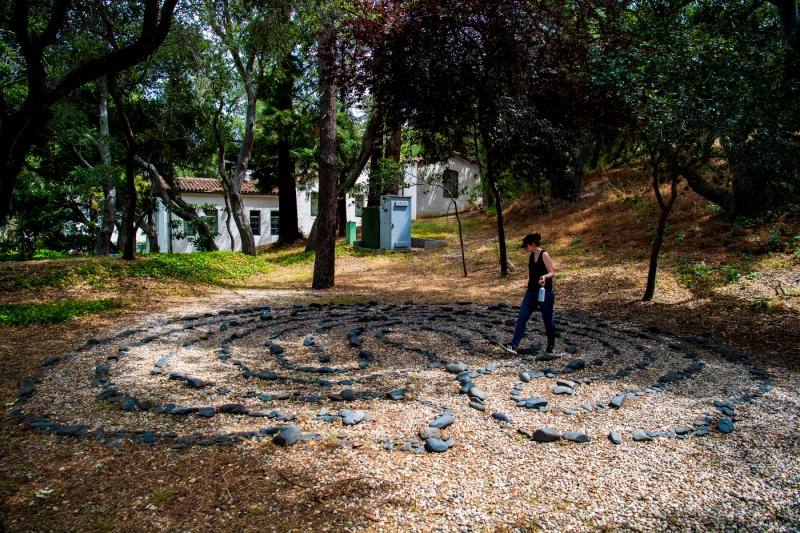
A two-mile hiking trail surrounds the campus.
And a student-run farm features a variety of plants. That is Mills College assistant director of admissions Diana Martinez’s favorite spot on campus. “I just love it there because it’s so colorful,” she said.
Another campus quirk that she’s noticed is near a bench just behind the alumni house. “Before quarantine, a student just left a journal there in a Ziploc bag,” she said. “The purpose was for whoever sits at that bench to just write a special, happy note, or just whatever is on their mind.”
The journal seems to have disappeared—could it be the work of one of the mischievous campus ghosts?
For media inquiries, please contact media@northeastern.edu.






